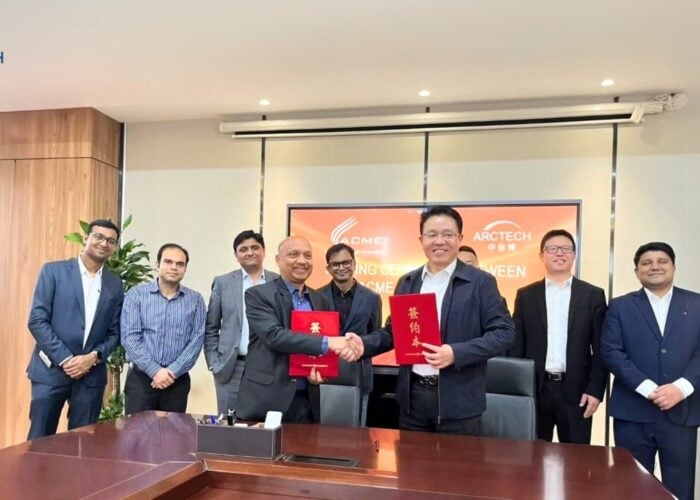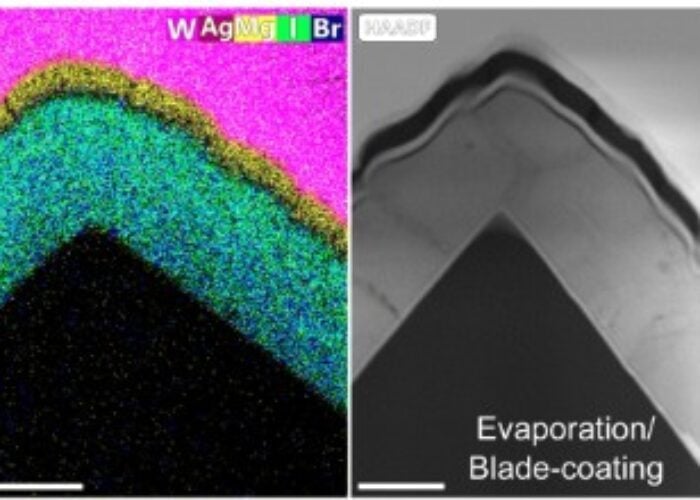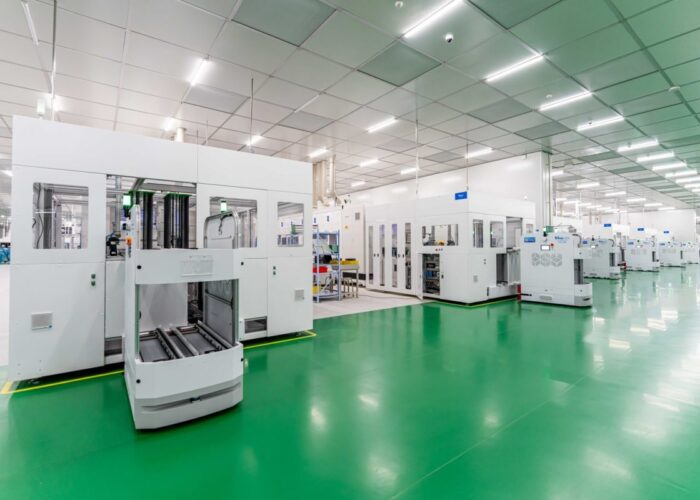Forget the shiny new solar modules with their aesthetically pleasing black anodized frames courting the fashion-conscious residential rooftop owner at Solar Power International, but rather go and check-out the big powerful stuff. The U.S. is a big country, has big electrical needs and has a huge multigigawatts pipeline of utility-scale projects waiting in the wings.
The brilliance of GE
Unlock unlimited access for 12 whole months of distinctive global analysis
Photovoltaics International is now included.
- Regular insight and analysis of the industry’s biggest developments
- In-depth interviews with the industry’s leading figures
- Unlimited digital access to the PV Tech Power journal catalogue
- Unlimited digital access to the Photovoltaics International journal catalogue
- Access to more than 1,000 technical papers
- Discounts on Solar Media’s portfolio of events, in-person and virtual
Or continue reading this article for free
What better way to highlight the solar power generation sector’s new product offerings but with a company with revenues of US$40 billion per annum, GE Energy. Certainly not bashful, GE has launched the ‘Brilliance’ solar inverter, which is based on the power conversion unit employed in GE’s 14,000 1.5MW wind turbines. GE’s 700KW and 1MW solar inverters come enabled with ‘SunIQ’, GE’s monitoring and controls platform of grid-friendly features that allow a large-scale solar system to operate similar to a conventional power plant.
The company also highlighted that GE’s system solution focuses on delivering the lowest cost of energy and includes the Brilliance solar inverter technology, components matched for optimized installation and grid integration especially with GE’s thin film technology (more on that in a module review). GE claims that its standard design is easily scalable and is available in both 700kW and 1MW power blocks.
In need of a tie?
Another American firm using SPI to enter the PV market is American Superconductor Corp. (ASMC). They are launching the ‘SolarTie grid interconnection solution,’ which is a utility-scale grid interconnection system designed specifically for megawatt-scale solar power plants. Using its power converter capabilities from the wind industry (note the trend already) with AMSC’s dynamic reactive compensation technology, the SolarTie product is claimed to be the industry’s first fully optimized solution for utility-scale PV power plant developers.
SolarTie solution provides instantaneous detection, accurate response and immediate results, according to ASMC, ensuring efficient energy production and precise grid management. It uses the example of when a disturbance occurs (voltage sag or swell, passing clouds or other event), the SGI will command the PV plant’s SolarTie inverters to provide the needed reactive support to control the voltage at the POI. AMSC’s SolarTie solution is claimed to supply subcycle (less than 16 milliseconds) detection and response to grid disturbances while many competing interconnection solutions have response times of 10 to 20 seconds. Which is much faster than trying to walk from one booth to another at SPI, especially AMSC’s which is #4553.
Step in from the cold
If you are not sure about the new kids on the block, then Satcon Technology has introduced its next-generation 500KW power conversion solution, Satcon Equinox. The system is claimed to improve systemwide energy harvest and solar plant yield, enabling the large-scale solar industry’s lowest levelized cost of energy (LCOE) with a best-in-class efficiency of 98.5%. It offers the highest levels of systemwide performance, uptime, and reliability, according to the company.
A neat touch is the fact that Equinox comes complete with a NEMA 3R/IP54 enclosure and is available in three separate climate packages, enabling the large-scale commercial and utility-scale solar industry’s broadest thermal operating range with fully rated performance at temperatures as high as 55°C/131°F, and as low as -20°C/-4°F, perfect for those Canadian winters. However, there is no need to get cold at their Booth 909.
Small but tough
Direct Grid Technologies has introduced a rugged utility-grade PV inverter that claims a unique architecture and a market-leading 460W power output in the microinverter space. The DGM-S460 microinverter can therefore be used on high-power modules up to 460W, or conversely, pairing two solar modules per microinverter up to 230W each. The DGM-S460 will be distributed in the United States initially through OEM partner Synergy Energy from New Jersey. Booth 4101.
Take it to the bridge
SolarBridge Technologies has launched the SolarBridge AC module system, a complete microinverter solution that is claimed to be the industry’s first solution for integrated AC modules with a full 25-year warranty. The SolarBridge Pantheon microinverter requires a tiny fraction of the bulk capacitance of traditional inverter architectures, enabling the use of long-life film capacitors, which combined with the Pantheon’s advanced thermal management and other reliability attributes is said to deliver a microinverter with the same lifetime as the module to which it is attached. The company is initially partnering with module manufacturers such as Kyocera and SunPower and would expect others to follow in their path. Booth 4106.
Hotspot prevention
I know we started big but we have to end small, I am afraid. However, STMicroelectronics isn’t a small company, even if the product is. ST’s new SPV1001 contains a low-loss power switch and a precision controller. Directly replacing bypass diodes, which are used to prevent hotspot effects, the SPV1001 protects the energy normally lost in each diode. Compared to the use of diodes, the integrated power switch provides negligible leakage current when the photovoltaic panel is producing energy. ST’s BCD6 chip fabrication process provides the key to this advance by integrating highly efficient power components with logic control circuitry.
In addition to package options enabling one-for-one replacement of bypass diodes in the solar panel’s junction box, the SPV1001 is available in an MLPD package that can be laminated directly into the panel, due to the device’s ultra-low-profile and minimal power losses. This will simplify electronic design and assembly while also boosting system reliability. The tiny device should be located on their Booth 6209, probably in a big cabinet display to help people see it better.
Full product reviews will follow in our Product Briefings section, once I get my energy back!







